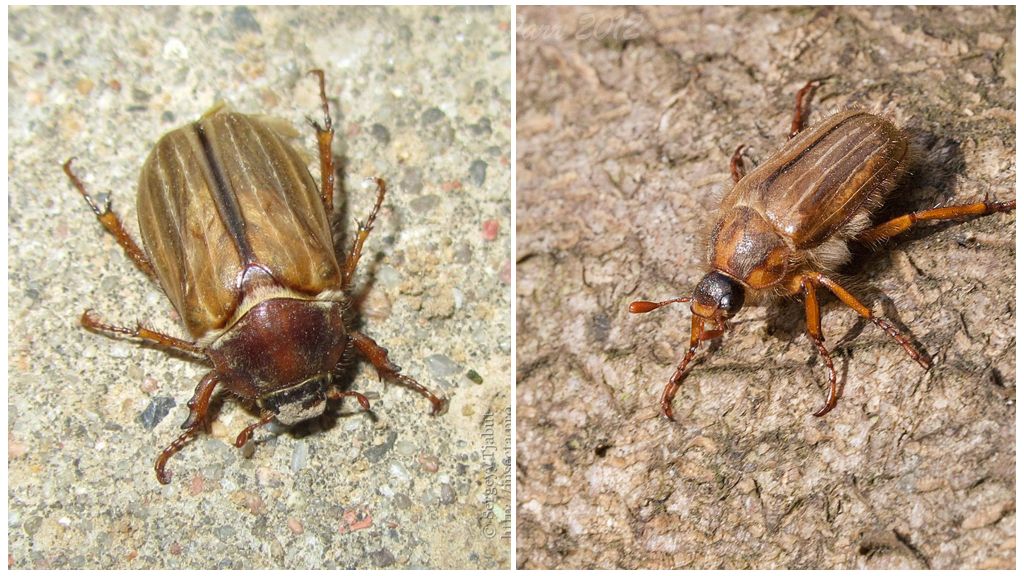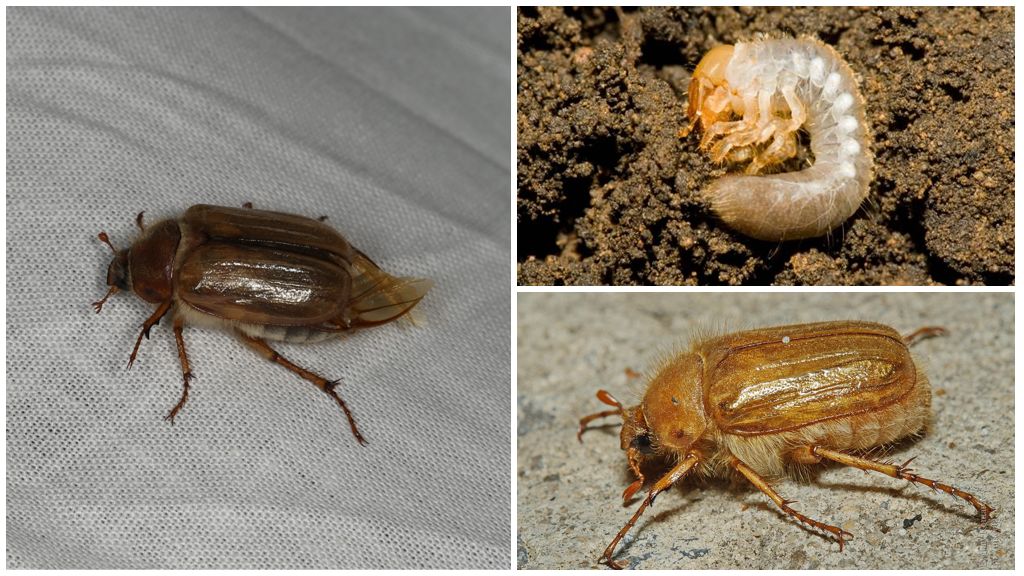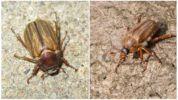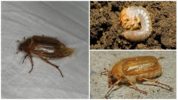- Nekhrushch ordinary
- June beetle
In warm summertime, the number of insect pests increases significantly. The little-known June bug belongs to them. It is also called June khrushchev or ordinary nonchrush. Many children, and maybe adults, wondered if there were June beetles or August beetles. After all about may bugs everyone heard. Their names correspond to the month of the highest activity of the insect. Their difference lies not only in the appearance period, but also in many other interesting facts.
Description of appearance
The insect June beetle looks very similar to May.
- The length of his body is 14-18 mm.
- The color of the shell has a brown tint. Elytra light brown with a glossy yellowish sheen.
- The paws have a reddish tint.
If you compare the photo of the June beetle with the May one, the color of the first is a little lighter. The abdomen is covered with brown hairs. From how the khrushch looks, you can find out its gender. In females, the hairs on the abdomen are shorter and located less frequently.
Interesting!
During the flight, the Khrushchevs make a rather loud buzzing sound. Sometimes a large cluster of bugs can be mistaken for the hum of a transformer or other electrical device.
The head of the insect is dark brown. The antennae consist of nine parts - flat segments. Hence the name of the family Lamellae, which include the June beetle and May beetle. Also mistakenly mistaken for bronze bronchus. The activity of this insect also occurs in June, and some call it the green June bug.
Habitat
Common nonsense are found in many regions: the Caucasus, Western Siberia, Altai, European countries, and Central Asia. Such a wide distribution is explained by the good survival of the June beetle larvae. Anticipating the cold, she can go deep into the ground and winter there safely.

On a note!
Khrushchev prefer to settle in coniferous forests, where dry sandy soils predominate. The edges of the forest, fields, shrubs - the favorite habitat of the insect. Nearby orchards and plants can become his home.
Developmental stages
The summer beetle can rightfully be called that because it begins and ends its life precisely in this period. In early June, adults appear on the surface of the earth. The years of beetles and their mating begins. Immediately after fertilization, the females burrow into the topsoil, where they lay their eggs. In one clutch, there are from 20 to 30 eggs.
The embryo develops from one to one and a half months, then a larva appears. It is a thick caterpillar reaching a length of up to 5 cm. The body of the larva is white, the head has a red tint. The caterpillar has three pairs of legs, with the help of which it freely moves in loose soil in search of tender roots of plants.
Interesting!
In winter, the larva deepens into the lower words of the soil. So she spends 2 years until she turns into a chrysalis. With the onset of steady warm weather, an adult insect appears from the pupa.
Nutrition
What the larvae eat depends on their location. If the egg laying was buried in the soil of the steppe area, the roots of grains and melons, field plants can become victims of a gluttonous caterpillar. Young pine trees, maples, whose roots are a nutritious treat for larvae, suffer in the forest strip.

On a note!
Many experienced gardeners have learned to calculate the possible appearance pests of gardens in a certain period of time. They take measures to protect plants from beetles.
Imagoes of common naughty eagerly eat the foliage of many trees and shrubs, pine needles. The difference between the May and June beetles in time of their increased activity is small, and sometimes their greatest number appears at the same time. This period is especially dangerous for plants that fall under the attention of insects.
Harm and protection against June pests
Gardeners and summer residents have every reason to dislike summer insects. Khrushchev actively eat the crown of fruit trees, foliage of shrubs, such as: raspberries, currants, gooseberries. Larvae destroy the underground parts of plants and prevent them from developing normally.
To prevent such an extensive wrecking, competent owners of the plots carry out measures to effectively eradicate the gross. They dig a surface layer of earth in search of larvae. Treated with special means of tree foliage. Use traps, chemicals, preparations based on biocomponents for the safe fight against uninvited gluttonous guests.





